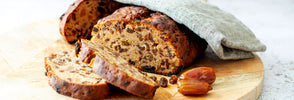
Mastocytosis - what is it?
A guest contribution by Sigrid Nesternenko and Ralph Kurth
Mastocytosis is a rare disease and can occur in children and adults.
With mastocytosis there is a pathological accumulation and activation of mast cells in the bone marrow, in the skin, in the musculoskeletal system or in the internal organs such as spleen, liver, lymph nodes and gastrointestinal tract.
A disease with diverse symptoms
Mastocytosis, the disease with many faces, shows up in a variety of ways like just a few other diseases. Many symptoms are ambiguous and can also occur with other clinical pictures. It is therefore not easy to make the diagnosis of mastocytosis even for very experienced doctors. Unfortunately, it is therefore not uncommon for a long time to diagnose.
Which symptoms occur depends on which body area is affected by an excessive accumulation with mast cells. A distinction is made between cutaneous and systemic mastocytosis.
Cutaneous mastocytosis
Local skin changes are the classic characteristic of cutaneous mastocytosis:
• Itching spots
• reddening
• Square
• reddish brown spots
• Larger sublime red bumps
Systemic mastocytosis
In systemic mastocytosis, generalized symptoms occur such. B.:
• racing heart
• Diarrhea
• reddening of the skin
• itching
• feeling of heat
• exhaustion
• Blood pressure fluctuations
• Osteoporosis
• nausea
• Vomiting
• Pains
• enlarged lymph nodes
• shortness of breath
• Angstattacken
• muscle pain
Causes
To date, the background and causes of the development of mastocytosis are only partially known. As a main cause, the mutation of a growth receptor in adults is suspected, which can also be inherited.
Multicolumn
-
Severe allergic reactions - emergencies in mastocytosis
In people with mastocytosis, there is always an increased risk of serious and sometimes life -threatening symptoms, which is called anaphylaxis and is extremely tricky.
This is made possible by the abnormal number of mast cells that can release large amounts of histamine into the blood. This can happen, for example, after an insect bite, so that within a few minutes of shortness of breath or cardiovascular problems occur. How anaphylaxis runs can never be predicted, which is why it is advisable for many people with mastocytosis to carry an adrenaline emergency set (adrenaline autoinjector) that can be used in the treatment of the symptoms of anaphylaxis.
A severe acute allergic reaction is always an emergency, so it is advisable to practice using the emergency set in order to be able to act properly in acute cases. Family and friends should also be informed about the risk of anaphylaxis and the emergency set. -
How does mastocytosis differ in children and adults?
In adults, it often happens that mastocytosis not only affects the skin, but also the bone marrow. The disease can be mild or aggressively, it tends to become chronic in adults. In individual cases, the clinical picture can deteriorate.
When the disease occurs in childhood, symptoms typically only appear on the skin without internal organs involved. Most of the time, only symptomatic therapy is required here. In many young patients, the disease resigns itself to puberty.
How is mastocytosis treated?
The cause is not possible to cure the disease, so that the goal of treating mastocytosis is always a reduction in symptoms. There are a number of different options here to lead to noticeable improvements. The drug treatment consists of antihistamines that serve to inhibit the released mast cell messenger substances and mast cell stabilizers (e.g. cromoglicic acid) inhibiting the activation of mast cells. Therapy should always be based on the specific symptoms and the severity of the disease, which requires individualized therapy.
The mysterious trigger
The symptoms can be caused or worse by triggering stimuli (trigger). The most effective and most important treatment of mastocytosis is thus avoiding the respective triggers. The essential triggers include foods that affect the histamine balance unfavorably, insect bites and intensive physical activities. Certain drugs such as aspirin and codeine as well as X -ray contrast agents and anesthesia can also act as triggers. Which factors act as trigger is very individual.
While some mastocytosis patients, for example, tolerate insect bites or aspirin, other reactions, on the other hand, lead to highly sensitive reactions. The more precisely you know the personal triggers and avoid them, the better the chance of relieving the symptoms. Especially at the beginning of the diagnosis, it can be difficult to identify the trigger. This requires a lot of patience and, if necessary, a clarification by an allergist.
Can medication act as a trigger?
Not only food, but also medication can act as triggering stimuli. These include:
• Thyroxine
• Corticoids
• Ciprofloxacin
• Narcotics
• Metrexate
• Erythropoietin
• Hormonal medication (e.g. estrogen and progesterone)
• Oral contraceptives
• Azathioprine
How can mastocytosis be found?
Cutaneous mastocytosis can be diagnosed on the basis of certain skin freight matters and here in particular the typical brown-red spots. A tissue sample can be used to secure the diagnosis. In the case of a blood value determination, the tryptase value is particularly important, since this provides information about the amount of mast cells in the body. If systemic mastocytosis is suspected, the treating doctor can arrange a tissue sample from the bone marrow.
Which foods should be avoided in mastocytosis?
The diet in mastocytosis aims to improve the histamine balance and reduce the reaction of the mast cells. As a result, people with mastocytosis benefit from a low -histamine diet. This limits the consumption of food with a high histamine content (e.g. tomatoes, yeast, vinegar, red wine), but also foods that increase the release of histamine or block the histamine -degrading enzyme diaminoxidase (DAO).
The book authors Sigrid Nesternenko and Ralph Kurth show in their book “The right nutrition in mastocytosis”, which symptoms indicate the clinical picture and what treatment options are available. Focus on the connection between mastocytosis, mast cells and nutrition and present the best 120 recipes in mastocytosis. Sigrid Nesternenko has been writing a health guide for over 20 years. Among other things, she published the first book for those affected on the subject of histamine intolerance and the first German -language book about Leaky Gut, the permeable intestine. Together with her partner Ralph Kurth, a passionate cook, she founded the website www.heilkraft-ernaehrung.de in order to provide her knowledge of healthy eating and its supporting effect on many complaints and clinical pictures.
The affiliate link forwards you to Amazon. You can buy the book there.

From those affected for those affected
We are Thomas and Michaela Zinser, founder of Histaminikus.
Because of the own histamine intolerance of Michaela and our son, we founded Histaminikus. The frustration does not find any suitable histamine food has spurred us to develop low -histamine food.
We would like to give you back a piece of quality of life. Feel free to look around with us.
Kind regards
Thomas and Michaela







